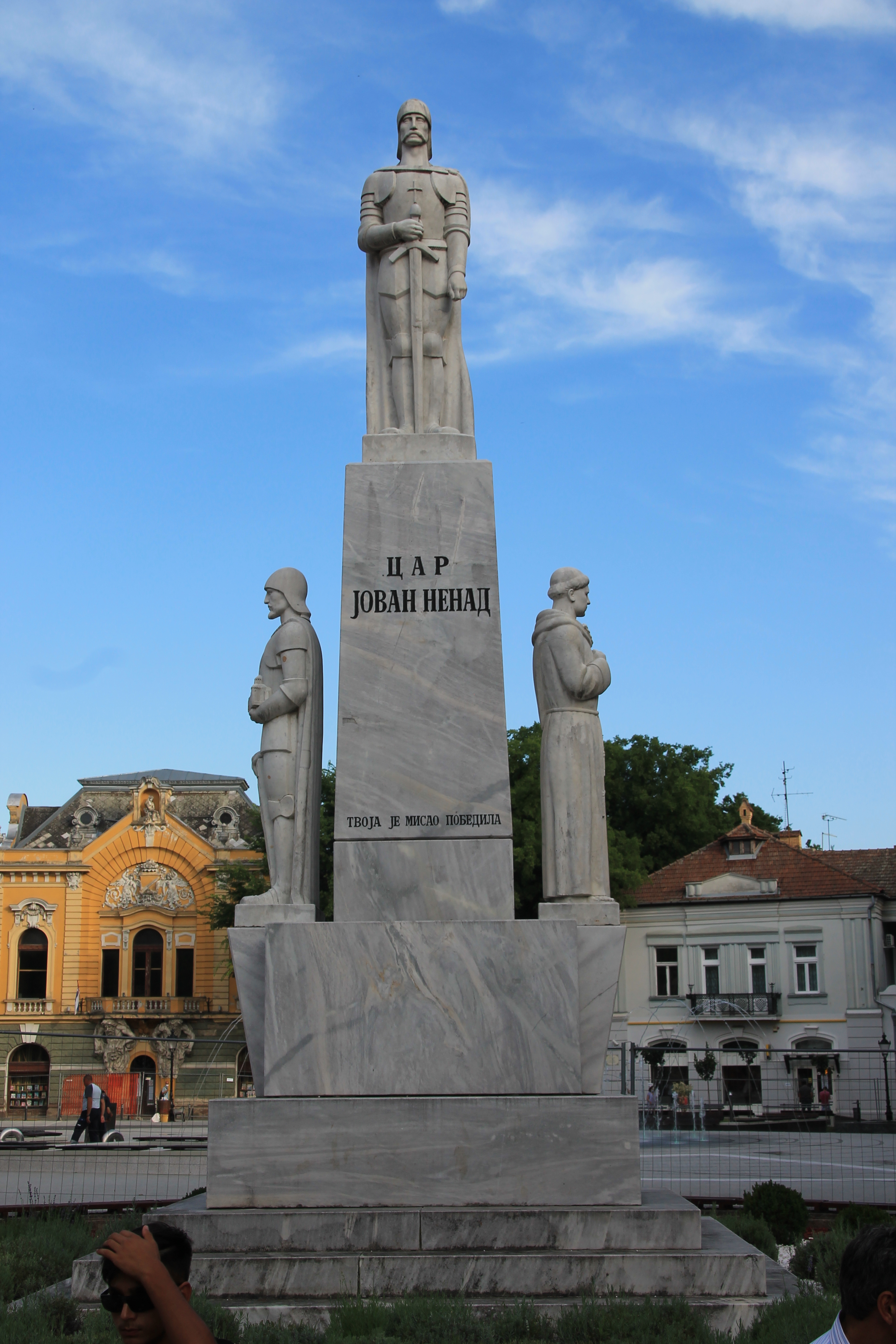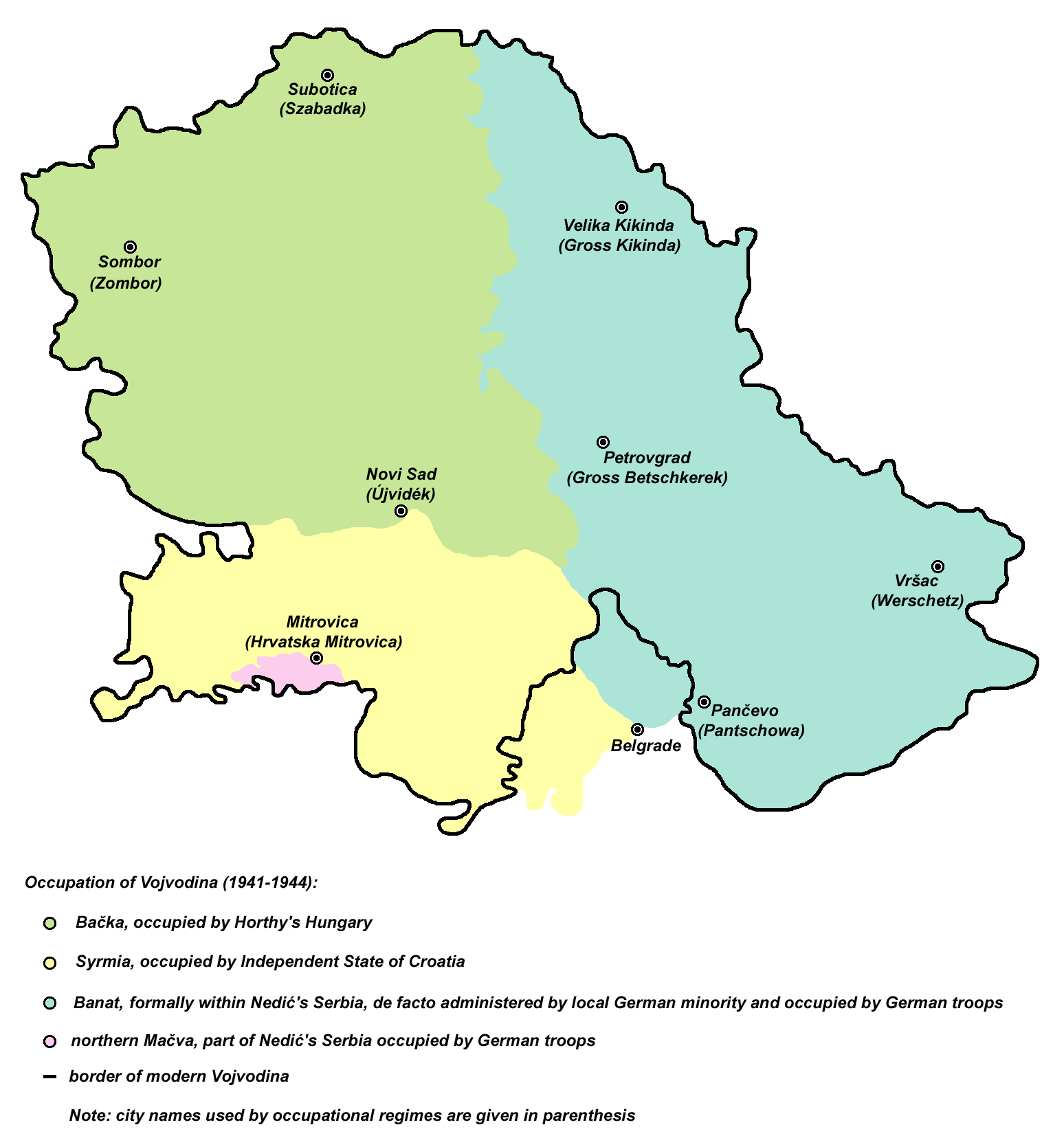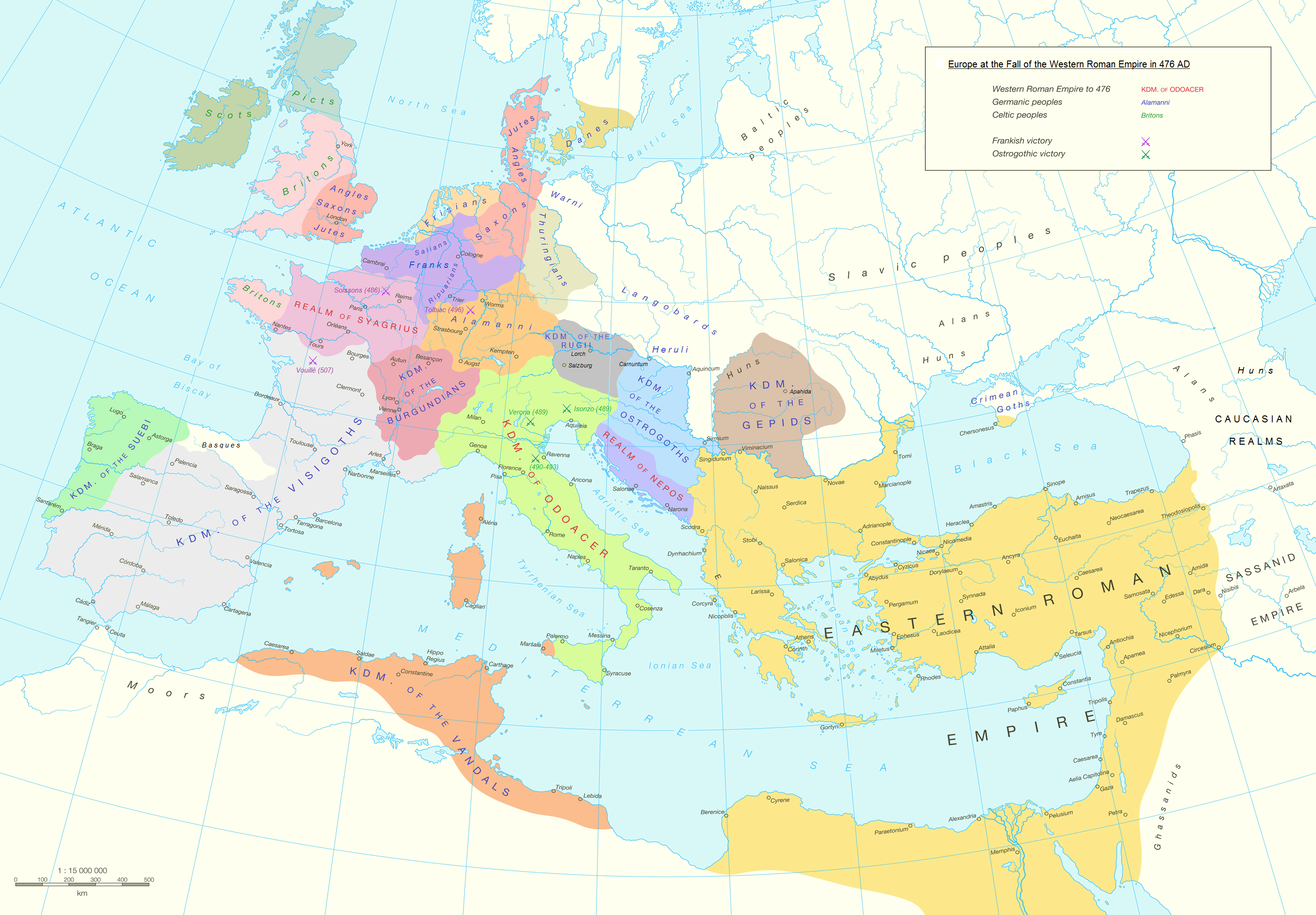|
Bajmok
Bajmok ( sr-Cyrl, Бајмок; hu, Bajmok, ) is a village located in the municipality of Subotica, in the North Bačka District, Vojvodina, Serbia. The village is ethnically mixed and its population numbered 7,414 inhabitants as of 2011 census. Name In Serbian Cyrillic the village is known as Бајмок, in Serbian Latin as ''Bajmok'', in Hungarian as ''Bajmok'', in Bunjevac as ''Bajmok'' or ''Bajmak'', in Croatian as ''Bajmak'' (since 2009) or ''Bajmok'' (before 2009), and in German as ''Nagelsdorf''. History The first written documents relating to Bajmok came from the fifteenth century. Then the village was for the first time officially mentioned as a village. King Matthias gave it to his mother, Erzebet Szilágyi. The deed of donation was confirmed on 16 February 1462. During Ottoman administration (16th-17th century), two villages with this name were mentioned: Bajmok and Novi Bajmok. Both villages had about 20 houses. Population was composed of ethnic Serbs. These ... [...More Info...] [...Related Items...] OR: [Wikipedia] [Google] [Baidu] |
Subotica
Subotica ( sr-cyrl, Суботица, ; hu, Szabadka) is a city and the administrative center of the North Bačka District in the autonomous province of Vojvodina, Serbia. Formerly the largest city of Vojvodina region, contemporary Subotica is now the second largest city in the province, following the city of Novi Sad. According to the 2011 census, the city itself has a population of 97,910, while the urban area of Subotica (with adjacent urban settlement of Palić included) has 105,681 inhabitants, and the population of metro area (the administrative area of the city) stands at 141,554 people. Name The name of the city has changed frequently over time.History of Subotica Retrieved 8 September 2022. The earliest known written name of the city was ''Zabotka'' or ''Zabatka'', which dates from 1 ... [...More Info...] [...Related Items...] OR: [Wikipedia] [Google] [Baidu] |
Bunjevci
Bunjevci ( sh-Latn-Cyrl, separator=" / ", Bunjevci, Буњевци, ; sh-Latn-Cyrl, label=, separator=" / ", Bunjevac, Буњевац, sh-Latn-Cyrl, label=, separator=" / ", Bunjevka, Буњевка) are a South Slavic sub-ethnic group living mostly in the Bačka region of northern Serbia and southern Hungary ( Bács-Kiskun County), particularly in Baja and surroundings, in Croatia (e.g. Primorje-Gorski Kotar County, Lika-Senj County, Slavonia, Split-Dalmatia County, Vukovar-Srijem County), and in Bosnia-Herzegovina. They presumably originate from western Herzegovina. As a result of the Ottoman conquest, some of them migrated to Dalmatia, from there to Lika and the Croatian Littoral, and in the 17th century to the Bácska region of Hungary. Bunjevci who remained in Bosnia and Herzegovina, as well as those in modern Croatia today, maintain that designation chiefly as a regional identity, and declare as ethnic Croats. Those who emigrated to Hungary were largely assimilat ... [...More Info...] [...Related Items...] OR: [Wikipedia] [Google] [Baidu] |
List Of Populated Places In Serbia
This is the list of populated places in Serbia (excluding Kosovo), as recorded by the 2002 census, sorted alphabetically by municipalities. Settlements denoted as " urban" (towns and cities) are marked bold. Population for every settlement is given in brackets. The same list in alphabetic order is in List of populated places in Serbia (alphabetic). A Ada Aleksandrovac Aleksinac Alibunar Apatin Aranđelovac Arilje B Babušnica Bač Bačka Palanka Bačka Topola Bački Petrovac Bajina Bašta Barajevo Batočina Bečej Bela Crkva Bela Palanka Beočin Blace Bogatić Bojnik Boljevac Bor Bosilegrad Brus Bujanovac C Crna Trava Č Čačak Čajetina Čoka Čukarica Ć Ćićevac Ćuprija D Despotovac Dimitrovgrad Doljevac G Gadžin Han Golubac Gornji Milanovac Grocka I Inđija Irig Ivanjica J Jagodina K Kanjiža Kikinda Kladovo Knić Knjaževac Ko ... [...More Info...] [...Related Items...] OR: [Wikipedia] [Google] [Baidu] |
Matthias Corvinus Of Hungary
Matthias Corvinus, also called Matthias I ( hu, Hunyadi Mátyás, ro, Matia/Matei Corvin, hr, Matija/Matijaš Korvin, sk, Matej Korvín, cz, Matyáš Korvín; ), was King of Hungary and Croatia from 1458 to 1490. After conducting several military campaigns, he was elected King of Bohemia in 1469 and adopted the title Duke of Austria in 1487. He was the son of John Hunyadi, Regent of Hungary, who died in 1456. In 1457, Matthias was imprisoned along with his older brother, Ladislaus Hunyadi, on the orders of King Ladislaus the Posthumous. Ladislaus Hunyadi was executed, causing a rebellion that forced King Ladislaus to flee Hungary. After the King died unexpectedly, Matthias's uncle Michael Szilágyi persuaded the Estates to unanimously proclaim the 14-year-old Matthias as king on 24 January 1458. He began his rule under his uncle's guardianship, but he took effective control of government within two weeks. As king, Matthias waged wars against the Czech mercenaries who dom ... [...More Info...] [...Related Items...] OR: [Wikipedia] [Google] [Baidu] |
Occupation Of Vojvodina, 1941-1944
The military occupation of the Yugoslav region of Vojvodina (now in Serbia) from 1941 to 1944 was carried out by Nazi Germany and its client states / puppet regimes: Horthy's Hungary and Independent State of Croatia. In 1941, during World War II, Nazi Germany, Fascist Italy and Hungary invaded and occupied Yugoslavia. The modern-day Vojvodina region (then the northern part of Danube Banovina province of Yugoslavia) was divided into three occupation zones: Banat was part of the area governed by the Military Administration in Serbia and was de facto under control of its ethnic German minority; Bačka was attached to Horthy's Hungary; while Syrmia was attached to Independent State of Croatia. The occupation lasted until 1944, when the region came under control of the Soviet Red Army and Yugoslav partisans. War crimes During the four years of occupation, the Axis forces committed numerous war crimes against civilian population: about 50,000 people in Vojvodina were murdered ... [...More Info...] [...Related Items...] OR: [Wikipedia] [Google] [Baidu] |
World War II
World War II or the Second World War, often abbreviated as WWII or WW2, was a world war that lasted from 1939 to 1945. It involved the World War II by country, vast majority of the world's countries—including all of the great powers—forming two opposing military alliances: the Allies of World War II, Allies and the Axis powers. World War II was a total war that directly involved more than 100 million Military personnel, personnel from more than 30 countries. The major participants in the war threw their entire economic, industrial, and scientific capabilities behind the war effort, blurring the distinction between civilian and military resources. Air warfare of World War II, Aircraft played a major role in the conflict, enabling the strategic bombing of population centres and deploying the Atomic bombings of Hiroshima and Nagasaki, only two nuclear weapons ever used in war. World War II was by far the List of wars by death toll, deadliest conflict in hu ... [...More Info...] [...Related Items...] OR: [Wikipedia] [Google] [Baidu] |
World War I
World War I (28 July 1914 11 November 1918), often abbreviated as WWI, was List of wars and anthropogenic disasters by death toll, one of the deadliest global conflicts in history. Belligerents included much of Europe, the Russian Empire, the United States, and the Ottoman Empire, with fighting occurring throughout Europe, the Middle East, Africa, the Pacific Ocean, Pacific, and parts of Asia. An estimated 9 million soldiers were killed in combat, plus another 23 million wounded, while 5 million civilians died as a result of military action, hunger, and disease. Millions more died in Genocides in history (World War I through World War II), genocides within the Ottoman Empire and in the Spanish flu, 1918 influenza pandemic, which was exacerbated by the movement of combatants during the war. Prior to 1914, the European great powers were divided between the Triple Entente (comprising French Third Republic, France, Russia, and British Empire, Britain) and the Triple A ... [...More Info...] [...Related Items...] OR: [Wikipedia] [Google] [Baidu] |
Germans
, native_name_lang = de , region1 = , pop1 = 72,650,269 , region2 = , pop2 = 534,000 , region3 = , pop3 = 157,000 3,322,405 , region4 = , pop4 = 21,000 3,000,000 , region5 = , pop5 = 125,000 982,226 , region6 = , pop6 = 900,000 , region7 = , pop7 = 142,000 840,000 , region8 = , pop8 = 9,000 500,000 , region9 = , pop9 = 357,000 , region10 = , pop10 = 310,000 , region11 = , pop11 = 36,000 250,000 , region12 = , pop12 = 25,000 200,000 , region13 = , pop13 = 233,000 , region14 = , pop14 = 211,000 , region15 = , pop15 = 203,000 , region16 = , pop16 = 201,000 , region17 = , pop17 = 101,000 148,00 ... [...More Info...] [...Related Items...] OR: [Wikipedia] [Google] [Baidu] |
Serbian Vojvodina
The Serbian Vojvodina ( sr, Српска Војводина / ) was a short-lived self-proclaimed Serb autonomous province within the Austrian Empire during the Revolutions of 1848, which existed until 1849 when it was transformed into the new (official) Austrian province named Voivodeship of Serbia and Banat of Temeschwar. Name In German, it was known as . In Serbian is also known as (Serbian Cyrillic: , german: Serbische Woiwodschaft, link=no; "Serbian Voivodeship"), (Serbian Cyrillic: ; "Serbian Vojvodovina"), and (Serbian Cyrillic: ; "Vojvodovina of Serbia"). History During the 1848 Revolution, the Hungarians demanded independence from the Austrian Empire. However, they did not recognize the national rights of other nationalities which lived in the Habsburg Kingdom of Hungary at that time. Therefore, the Serbs of Vojvodina took action to separate from the Kingdom of Hungary (which was at that time part of Habsburg Austria). An assembly was convened in Sremski Karlovci l ... [...More Info...] [...Related Items...] OR: [Wikipedia] [Google] [Baidu] |
Kingdom Of Hungary
The Kingdom of Hungary was a monarchy in Central Europe that existed for nearly a millennium, from the Middle Ages into the 20th century. The Principality of Hungary emerged as a Christian kingdom upon the coronation of the first king Stephen I at Esztergom around the year 1000;Kristó Gyula – Barta János – Gergely Jenő: Magyarország története előidőktől 2000-ig (History of Hungary from the prehistory to 2000), Pannonica Kiadó, Budapest, 2002, , p. 687, pp. 37, pp. 113 ("Magyarország a 12. század második felére jelentős európai tényezővé, középhatalommá vált."/"By the 12th century Hungary became an important European factor, became a middle power.", "A Nyugat részévé vált Magyarország.../Hungary became part of the West"), pp. 616–644 his family (the Árpád dynasty) led the monarchy for 300 years. By the 12th century, the kingdom became a European middle power within the Western world. Due to the Ottoman occupation of the central and s ... [...More Info...] [...Related Items...] OR: [Wikipedia] [Google] [Baidu] |
Hungarian Revolution Of 1848
The Hungarian Revolution of 1848 or fully Hungarian Civic Revolution and War of Independence of 1848–1849 () was one of many European Revolutions of 1848 and was closely linked to other revolutions of 1848 in the Habsburg areas. Although the revolution failed, it is one of the most significant events in Hungary's modern history, forming the cornerstone of modern Hungarian national identity. In April 1848, Hungary became the third country of Continental Europe (after France (1791), and Belgium (1831)) to enact law about democratic parliamentary elections. The new suffrage law (Act V of 1848) transformed the old feudal parliament ( Estates General) into a democratic representative parliament. This law offered the widest suffrage right in Europe at the time. The crucial turning point of events was when the new young Austrian monarch Franz Joseph I arbitrarily revoked the April laws (ratified by King Ferdinand I) without any legal competence. This unconstitutional act irr ... [...More Info...] [...Related Items...] OR: [Wikipedia] [Google] [Baidu] |





